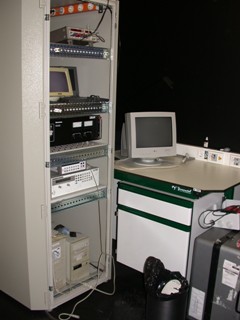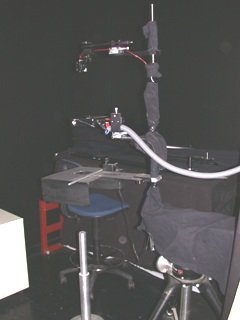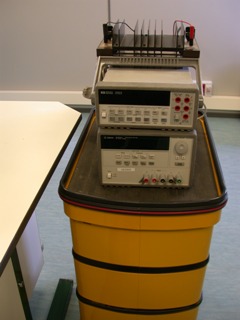Table of Contents
RBCC-E_Instruments
The Izo Triad
The RBCC-E's reference is based on three double Mk III spectroradiometers (the IZO triad): a regional primary reference (Brewer 157), a Regional Secondary Reference (Brewer185) and Regional Travelling Reference (Brewer 183). The IZO Triad is regularly sun calibrated by means of Langley methods and by external lamps. The travelling instrument ensures reference transference to the WMO-RegionVI Brewer network.
<div class=“center”>Click on Brewer names to display instrument information.</div> <div class=“center”><div class=“thumb tnone”><div class=“thumbinner” style=“width:429px”> <imagemap> Image:Triad.jpg|Brewers 183,157 & 185 at Izaña Observatory rect 345 88 425 104 Brewer 185 rect 320 130 422 148 Brewer 157 rect 284 226 400 246 Brewer 183 </imagemap> <div class=“thumbcaption”><i>Brewers 183,157 & 185 at Izaña Observatory</i></div> </div></div></div>
Apart from the IZO triad, other facilities available are:
Travelling calibration equipment
Apart from Brewer183, IZO can also send to intercomparison campaigns calibration equipment such as 1000W lamps (NIST certificated), spectral lamps, controlled current sources and high precision shunts. These are very important tools to perform outdoor/indoor spectral and UV calibration of other radiometers at the intercomparison site.
Computing Facilities
A database has been created to gather total ozone, check parameters and status for every IZO triad Brewer. This data base is accessible in the main page.
Ancillary Equipment
Ancillary equipment. Besides the IZO triad, several other instruments are running on a routine basis at IZO which have also the role of supporting RBCC-E observations. These support instruments are:
#Mark II single Brewer 033, located at sea level (52 m a.s.l.) in Santa Cruz de Tenerife (SCO). This spectroradiometer complements total ozone measurements performed at IZO (2400 m a.s.l.) providing information from the lower 2 km. This complementary ozone observation site is quite adequate for satellite ozone validation purposes. #In-situ surface ozone with UV-absorption instruments both at IZO (since 1987) and SCO (since 2000). #ECC-A6 ozonesonde profiles performed at SCO (since 1992) on a weekly basis (normally on Wednesdays). #Spectral UV (Bebtham DM150), narrow and broadband UV (NILU-UV6 and Yankee-1), global (CM21), diffuse (CM21), direct radiation (NIP) and aerosol optical depth (WRC-PFR and Cimel sunphotometers). #The ozone is also measured at IZO on a routine basis by other techniques: UV-VIS (DOAS) in collaboration with the National Institute for Aerospace technology (Spain) and FTIR in collaboration with IMK-ASF. Forschungszentrum Karlsruhe (Germany).
Calibration Equipment
RBCC-E has an Optics Laboratory where very precise calibrations take place. NIST traceable 1000W lamps are used for this purpose. Among other equipments, the lab has available a stabilized and calibrated current source which can be programmed, a high precision voltmeter and a shunt (embedded in oil in order to prevent temperature-induced resistance changes).
{| align=“center”
| valign=“top” |
| valign=“top” |
| valign=“top” |
Portable Calibration Equipment
When intercomparison campaigns take place, a portable calibration system can be transported togheter with the travelling reference. It can be used to power 1000W and 50W calibration lamps in UV calibrations.
Control Center
The brewers of the Triad are controlled from three independent computers at IZO. The control centre is located two floors below the roof. Brewer daily schedule contains several waveleght calibrations and general optics performance analysis. More advanced programs and shcedules such as Langley calibrations are also run periodically. The Control Centre´s PCs is remotelly accesed and controlled from IZO headquarters in Santa Cruz de Tenerife.
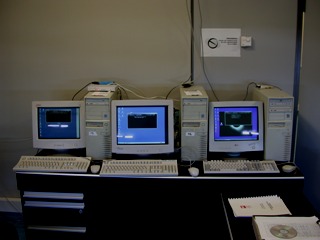
Other Equipment
{| align=“center”
| valign=“top” |
| valign=“top” |
[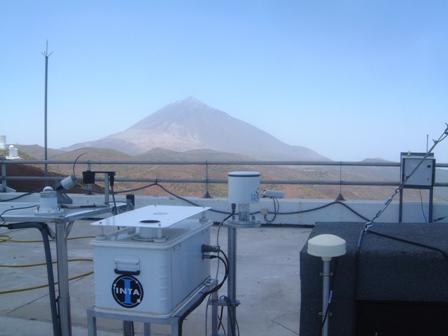 instrument, and the Nilu radiometer.]]
|-
| valign=“top”|<div class=“center”>Other radiometers</div>
instrument, and the Nilu radiometer.]]
|-
| valign=“top”|<div class=“center”>Other radiometers</div>
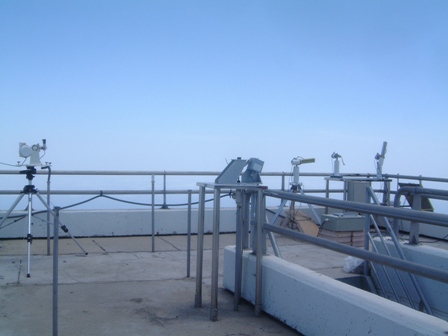 | valign=“top”|<div class=“center”>Surface ozone analyzers</div>
| valign=“top”|<div class=“center”>Surface ozone analyzers</div>
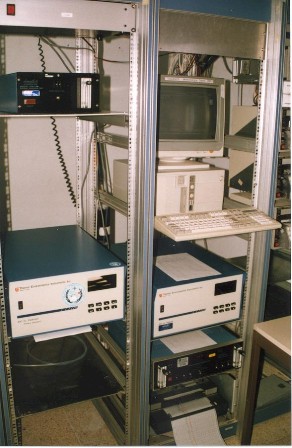 |}
|}
